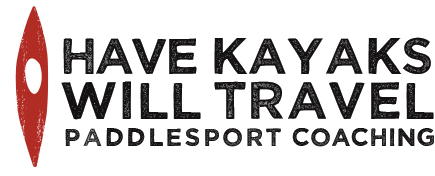Tom Motte, our Rhode Island connection. While we were in Maine, we briefly met Tim Motte, who tossed out a casual invitation: “Come to Rhode Island!” As with many invitations of this type in the paddling world, much more is implied. The full invitation is, “Come to Rhode Island and I’ll take you on some amazing paddles and introduce you to my kayaking cohort.” And in this case, “You can stay and my house and I’ll make you lunch!” Today’s menu: Peanut butter, banana, pumpkin seed and raisin sandwiches. So, of course, we went to Rhode Island, where we got to know Tim and the Rhode Island Canoe/Kayak Association (RICKA) crew. Meeting on the beach. Tim is a BCU five-star leader. According to the British Canoe Union, this means he: has entered a higher level of performance, involving a high level of personal skill and leadership in advanced situations. It is a leadership award and the appropriate test for paddlers who wish to lead groups of other paddlers in appropriate locations in advanced tidal waters and dynamic weather conditions typified by the Climate of the British Isles. The five star leader has the skills and judgement to select appropriate trips for a range of ability levels. Tim points out the intended route on a chart. We were privileged to spend two days paddling on the Rhode Island coast with Tim and the RICKA paddlers. Rhode Island has only 40 miles of shoreline if you look at its general coastline, but it has 384 miles of tidal coastline, which includes coast, islands, bays, sounds and rivers 100 feet or wider. In other words, it’s a craggy place, perfect for rock gardening and rough-water paddling. It was great watching Tim lead a group in these waters. In keeping with his five-star award, he adjusted the trip for participants who had varying degrees of comfort in the conditions. It was also great to meet more than a dozen RICKA paddlers from Rhode Island, Connecticut and Massachusetts, who realize how fortunate they are to live so near this amazing kayaking environment. Kayaking brings a diverse range of people together, creating strong bonds between people who otherwise would never have crossed paths. When we meet kayakers from other parts of the country and the world, we recognize in them the same passion for paddling, delight in sharing it, and desire to protect the places where it’s possible. Thanks, Tim and RICKA. We’ll be...
Rough water weekend
If a picture is worth 1,000 words, here’s a 3,000-word...
Rainy day paddle
The forecast today was rain and waves. So as soon as the kids left for school, we packed up and headed to Montrose beach to paddle with Scott Fairty. This wasn’t supposed to be a paddling day, but you don’t just let 2- to 4-foot waves get away unsurfed. Guess which car is ours. Synchonized paddling? The waves were rolling in nicely at the beach, but the area just north was chaos. Waves were hitting the “sheet piling” (shoreline retaining walls) and bouncing back, creating surf in both directions and at times meeting and combining to create waves twice as large. Going…. Going… Gone! Waves like these can be intimidating. They may be more of a challenge to your confidence than they are to your skills.Paddling in conditions like these, we realize how well our kayaks handle chaotic waves if we let them. Sometimes we just bob around in confused conditions without bracing to see how little we really need to do. But today, some bracing was necessary.Forecast for tomorrow: See you tomorrow, Scott? Sharon out to...
Rough water rescue practice
North winds at last! The forecast was 3- to 5-foot waves, so we hastened to the lake. This time we wore drysuits, only to find that some of the surface water had returned and the water was relative balmy–somewhere in the mid-60s.We love practicing rescues, but don’t often have an opportunity to try them in the conditions in which we’re most likely to need them. (Especially this year, when we’ve had very few big wave days.) So we took turns putting each other and ourselves back in our boats. Alec and Hannah complete a t-rescue. Alec completes a scramble (cowboy) self-rescue. Every time we do this, we are struck by how well these rescues work in conditions, but how essential it is to move quickly and hold on to everything (boats, paddles, people). We typically teach rescues in calm conditions in which paddlers are unlikely to capsize and try to convince our students that in real conditions, any lapse of attention can lead to serious complications. If the rescuer lets go of the casualty’s boat, it can whip away in the wind. If the casualty lets go of his or her boat or the rescuer’s deck lines, they can quickly be separated. If anybody lets go of a paddle, they may never see it again. Working on rescues in real conditions is the best test of your...







